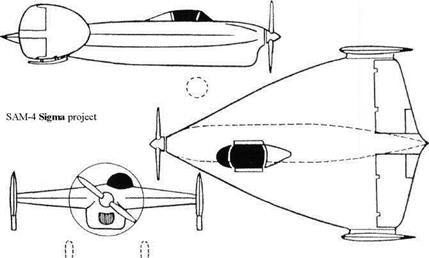
Purpose: To create a fighter with unprecedented speed.
Design Bureau: Aleksandr Sergeyevich Moskalyov, initially in Leningrad and later at the VGU and Aircraft Factory No 18, Voronezh.
Moskalyov was a talented young designer/ pilot who achieved success with conventional aircraft, notably the SAM-5 light transport (SAM stood for Samolyot [aeroplane] Aleksandr Moskalyov). He also persistently strove to create highly unconventional aeroplanes of tailless configurations. The first of the latter series was the Sigma, named for the letter of the Greek alphabet. He sketched this in 1933 whilst working at the Krasnyi Letchik (Red flyer) factory in Leningrad, and worked on rocket propulsion with V P Glushko in a serious endeavour to design an aeroplane to reach l,000km/h (621 mph), and if possible to exceed Mach 1 (the first project in the world with this objective). When it was clear that a rocket engine with adequate thrust was many years distant, he recast the design with piston engines. He was working on this when he left Leningrad to be a lecturer at the VGU, the State University at Voronezh. Under the guidance of A V Stolyarov he tested models in the VGU’s newly built high-speed tunnel. In September 1934 he submitted his preliminary report on SAM-4 to the GlavAviaProm (directorate of aircraft industries), whose Director, 11 Mashkevich, berated Moskalyov for sub
mitting such ‘unimaginable exotics’.
By 1933 Moskalyov had decided a suitable configuration for a fast aircraft was an allwing layout with a ‘Gothic delta’ plan shape, with trailing-edge elevens and Scheibe surfaces (fins and rudders on the wingtips). The drawing shows two main wheels in the front view, but this may be an error as Moskalyov favoured a single centreline gear and, as shown, skids on the wingtip fins. The drawing shows a single propeller, but in fact Moskaly-
ov intended to use two Hispano-Suiza 12 Ybrs engines, each of 860hp (these were later made in the USSR under licence as the M-100), driving separate contra-rotating propellers. The stillborn rocket version would have had a prone pilot, but the piston-engined SAM-4 featured a conventional enclosed cockpit; the designer did not explain why this was offset to port.
This proposal was altogether too ‘far out’ for Mashkevich. No data survives.
Purpose: To test an aeroplane with landing gears on the centreline.
Design Bureau: S A Moskalyov at VGU and GAZNolS.
Unaware of the fact that Bartini had already flown the Stal’-6 (see page 16), Moskalyov decided in 1933 that it would be prudent to build a simple low-powered aeroplane to investigate the landing gear he proposed to use for his fighter, with a single mainwheel and skids under the wingtips and tail. It was flown in early 1934, but later in that year it was modified into the SAM-65/s.
The SAM-6 had a conventional tail, though its moment arm was very short and the aircraft was dominated by its relatively huge wing. The structure was wood, with fabric – covered control surfaces. The engine was a three-cylinder M-23 rated at 65hp. Behind the small fuel tank was the open cockpit. The Scheibe fins were not fitted with rudders, and were described by the designer as ‘plates’. Initial testing was done in early 1934 on centreline tandem skis. Later the front ski was replaced by a wheel on a sprung leg inside a trouser fairing. After rebuilding as the SAM-66/s testing continued in 1935. This had tandem cockpits with hinged hoods, and in its final form a conventional landing gear was fitted with two trousered mainwheels.
According to Shavrov ‘experiments showed that the centreline gear was quite practical’. Moskalyov intended to use such landing gear on the SAM-7, but ultimately decided not to (see original drawing of that aircraft). The following specification refers to the SAM-6t»/s.
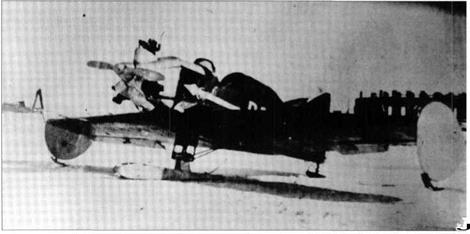
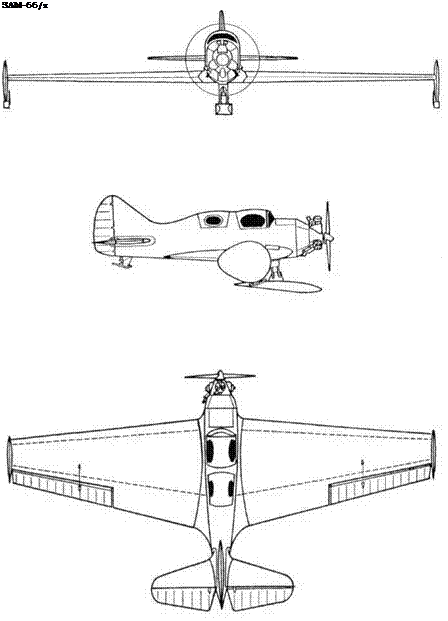 Top right: SAM-6.
Top right: SAM-6.
|
Dimensions Span Length Wing area
|
8.0m
4.5m
12.0m2
|
26 ft 3 in 14 ft 9 in 129ft2
|
|
Weights
|
|
Empty
|
380kg
|
838 Ib
|
|
Fuel
|
50kg
|
HOlb
|
|
Loaded
|
500kg
|
l,102lb
|
|
Performance
|
|
Speed at sea level
|
130km/h
|
81 mph
|
|
Service ceiling
|
3,000 m
|
9,842ft
|
|
Range
|
200km
|
124 miles
|
|
Landing speed
|
55km/h
|
34 mph
|
 Purpose: To build a superior two-seat fighter.
Purpose: To build a superior two-seat fighter.
Design Bureau: A S Moskalyov, at GAZ No 18, Voronezh.
In 1934 Moskalyov was engaged in engineering later versions of TB-3 heavy bomber for production. This enabled him to use one of this bomber’s engines and propellers to power a fighter (though it was hardly ideal for the purpose). Despite the fact that it was far more complex than any of his previous aircraft, and also had advanced all-metal construction, the SAM-7 was completed in October 1935. Pilots considered it potentially dangerous, and factory testing was confined to taxying at progressively higher speeds, ultimately making short hops in a straight line.
The SAM-7’s configuration was described by Shavrov as ‘one of the world’s most un
orthodox’, but in fact the wing was of fairly normal design, with straight equal taper and an aspect ratio of 4.6. Aerofoil profile was R – II, and the thickness/chord ratio 12 per cent, without twist. Apart from this the Sigma (the designer’s second use of this name) was indeed unconventional. There was no tail. On the wingtips were Moskalyov’s favoured Scheibe fins, fitted with fabric-covered horn – balanced rudders. On the wing trailing edge were outboard ailerons and inboard elevators which, when depressed to a slight angle, were intended also to serve as slotted flaps (though it is difficult to see how they could do so without putting the aircraft into a dive). The main landing gears had single struts, raked forward, with a track of 2.8m (9ft 2in), and were pivoted to the front spar to retract inwards. The surviving drawing shows a tail – wheel, but Shavrov says there was a non-cas-
toring tailskid. The structure was almost wholly Dl duralumin, the maximum wing skin thickness being 2.5mm. The nose inlet served the carburettors. The 830hp M-34 engine drove a four-blade wooden propeller, and was cooled by a surface evaporative (steam) system similar to that of the Stal’-6. For use at low speeds a normal honeycomb radiator could be cranked down behind the cockpit. The intended armament was two ShKAS fixed above the engine, fired by the pilot, and a second pair mounted on a pivot and aimed by the rear gunner.
One cannot help being astonished that Moskalyov was able to obtain funds to build this aircraft, because there is no mention of any official approval of the design (which would almost certainly have been refused). One feels sympathy with the test pilots, who were probably right to be hesitant.
Original OKB drawing of SAM-7.
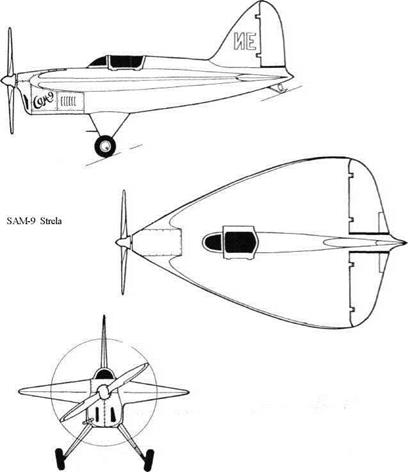 Purpose: To test at modest speeds an aircraft with a ‘Gothic delta’ wing of very low aspect ratio.
Purpose: To test at modest speeds an aircraft with a ‘Gothic delta’ wing of very low aspect ratio.
Design Bureau: A S Moskalyov, from 1936 head of his own OKB-31 at Voronezh.
Always eager to build his incredible SAM-4 dart-like fighter, Moskalyov was rebuffed in these efforts until in 1936 US magazines featured futuristic fighters with low-aspect-ratio wings, shaft drives and prone pilots. This spurred GUAP to invite Moskalyov at least to try out his radical ideas with a simple aircraft with an engine of modest power. Following tunnel tests by V P Gorskiy at CAHI (TsAGI), the SAM-9 was built in 70 days, and flown on skis in early 1937 by N S Rybko at Voronezh. Following six flights by Rybko and A N Gusarov, it was taken to Moscow and tested in short hops by Rybko and A P Chernavskii, finally making eight full flights in the hands of Rybko. The aircraft was tricky, demanding an angle of attack of 22° at take-off and landing, and being unable to climb higher than 1,500m (4,921ft). Despite this the NKAP (state commissariat for aviation industry) suggested that Moskalyov should produce a fighter with a 0.975 aspect ratio wing, and this led to the RM – l. SAM-29.
The SAM-9 Strela (Arrow) was made of wood, with a brilliant surface finish, the cable-operated rudder and elevons having fabric covering. The thick aerofoil was of RAF.38 profile, with local modifications. The cockpit was placed between the two main spars, with a hinged canopy. The engine was a Renault MV-4 aircooled inverted 4-cylinder rated at 140hp. The neat main landing gears had pivoted rubber-sprung cantilever legs for skis or wheels, and the tailskid did not castor. The rudder and broad-chord elevons had trim tabs.
|
Dimensions Span Length Wing area
|
3.55m
6.15m
13.0m2
|
Ilft53/4in 20 ft 2 in 140 ft2
|
|
Weights
|
|
|
|
Empty
|
470kg
|
l,0361b
|
|
Fuel and oil
|
60+10 kg
|
132+22 Ib
|
|
Loaded
|
630kg
|
l,3891b
|
|
Performance
|
|
|
|
Maximum speed actually
|
|
|
|
reached, at sea level
|
310km/h
|
195 mph
|
|
Altitude reached
|
1,500m
|
4,921 ft
|
|
Take-off run about
|
200m
|
656ft
|
|
Landing speed/
|
102km/h
|
63 mph
|
|
run
|
100m
|
328ft
|
Without the support of CAHI (TsAGI) and the (mistaken) belief that such aircraft were planned in the USA, this project would probably have got nowhere. As it was, the SAM-9 merely showed that such aircraft could fly,
but with difficulty. In a recent display ofmod – els of Moskalyov aircraft the SAM-9 was depicted entirely doped red except for the propeller blades, and with a placard giving speed and altitude as 340km/h and 3,400m.
Purpose: To design a small fighter with ‘push/pull’ propulsion.
Design Bureau: A S Moskalyov, OKB -31 at Voronezh.
This small fighter was unconventional in layout, but used an ordinary wing, and had nothing to do with the designer’s previous fighter concepts. According to Shavrov ‘Fokker designed an almost exact copy of the SAM-13, known as the D.23…’ In fact it was the other way about, because Moskalyov began this design in 1938, immediately after the D.23 had been exhibited at the Paris Salon. The single prototype was first flown by N D Fikson in late 1940, 18 months after the Dutch fighter, and proved difficult to handle, to need inordinately long runs to take off and land, and to have a sluggish climb and poor ceiling. Its designer worked round the clock to improve it, and by
spring 1941 it was undergoing LII testing in the hands of Mark L Gallai. Apart from the fact the nose gear never did retract fully, it was by this time promising, and it was entered for the summer high-speed race, but the German invasion on 22nd June stopped everything. The No 31 OKB was evacuated, but this aircraft had to be left behind so it was destroyed. The OKB documents have not been found.
The SAM-13 was powered by two 220hp Renault MV-6 inverted six-cylinder aircooled engines driving 2.2m (7ft 21/2in) two-blade variable-pitch propellers. Between them was the pilot, and Moskalyov fitted the rear propeller with a rapid-acting brake to make it safer for the pilot to bail out. The small two – spar wing was sharply tapered, and was fitted with split flaps inboard of the booms carrying the single-fin tail. Apart from welded steel – tube engine mounts, the structure was wood
en, with polished doped ply skin. The main landing gears retracted inwards and the nose unit aft. One drawing shows the nose unit (which had a rubber shimmy damper) to have had a levered-suspension arm for the axle. The intended armament, never fitted, comprised four 7.62mm ShKAS, two above the front engine and two at the extremities of the wing centre section.
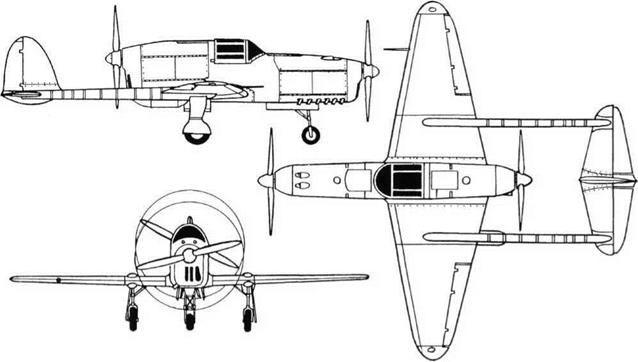 |
Moskalyov knew that the MV-6 was available for licence-production in the USSR, and thought this aircraft might make good use of some. Even had the programme continued without interruption it is hard to envisage the SAM-13 being adopted by the WS.
|
Dimensions (note: Shavrov’s dimensions
|
are incorrect)
|
|
Span
|
7.3m
|
23ftllAin
|
|
Length
|
7.85m
|
25 ft 9 in
|
|
Wing area
|
9.0m’
|
96.9ft2
|
|
Weights
|
|
|
|
Empty
|
754kg
|
l,6621b
|
|
Loaded
|
1,183kg
|
2,608 Ib
|
|
Performance
|
|
|
|
Max speed (design figures)
|
|
|
|
at sea level
|
463km/h
|
288 mph
|
|
at 4,000m (13,123 ft)
|
680km/h
|
423 mph
|
|
Service ceiling (estimate)
|
10,000m
|
32,808 ft
|
|
Range (estimate)
|
850 miles
|
528 miles
|
|
Landing speed
|
125km/h
|
78 mph
|
Purpose: To renew attempt to build a rocket-engined interceptor.
Design bureau: A S Moskalyov, No 31.
During the Great Patriotic War practical rocket engines for manned aircraft became available. Moskalyov never forgot that he had been invited by the NKAP to build a fighter with the so-called Gothic delta wing of 0.95 aspect ratio. In 1944, despite much other work, he collaborated with L S Dushkin in planning what was to be the ultimate Strela
fighter. This time most of the technology existed, and S P Korolyov lent his support, but once the War was over such a project was judged to be futuristic and unnecessary. Moskalyov’s OKB was closed in January 1946, and he returned to lecturing, but he continued to study this project for two further years.
The final SAM, also called Raketnyi Moska – lyov, would have followed the usual Strela form in having a Gothic delta wing and no horizontal tail. The wing was fitted with elevens and blended into a needle-nosed
fuselage carrying a large fin and rudder. The Dushkin RD-2M-3V engine, rated at 2,000kg (4,409 Ib) thrust at sea level and much more at high altitude, was installed at the rear and fed with propellants from tanks filling most of the airframe. Two cannon would have been installed beside the retracted nose landing gear.
This was yet another of this designer’s near misses, all of which stemmed from his abundance of enthusiasm.
No data survives.

|
Two sketches, one called SAM-29, the other RM-1.
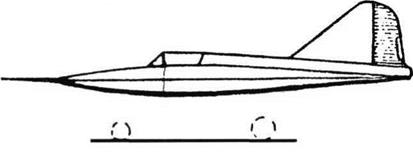
|
|
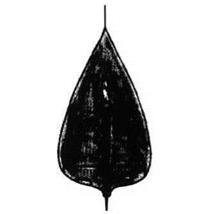

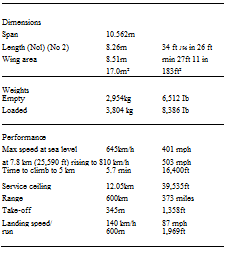
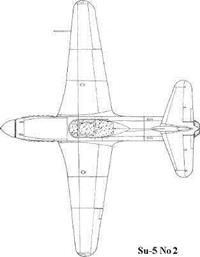
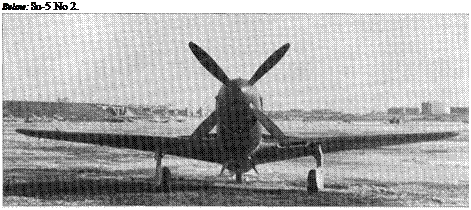 Sukhoi said later this aircraft was a ‘nonstarter’ from the outset.
Sukhoi said later this aircraft was a ‘nonstarter’ from the outset.












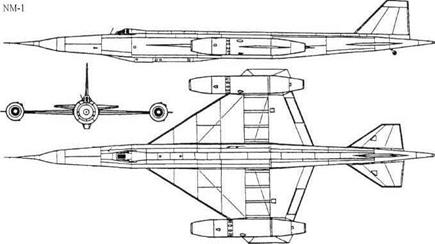
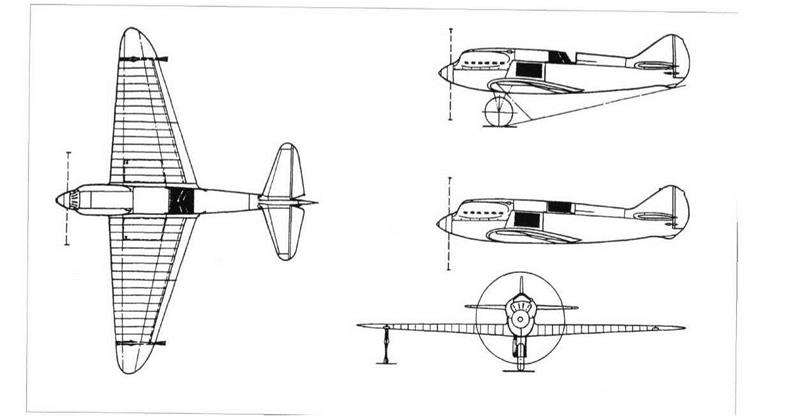
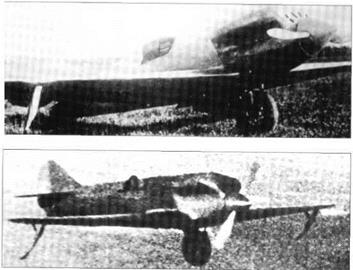
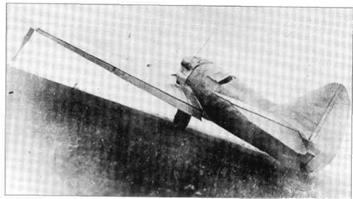
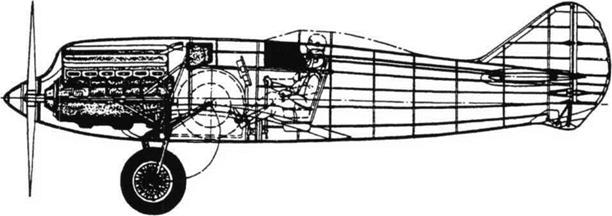
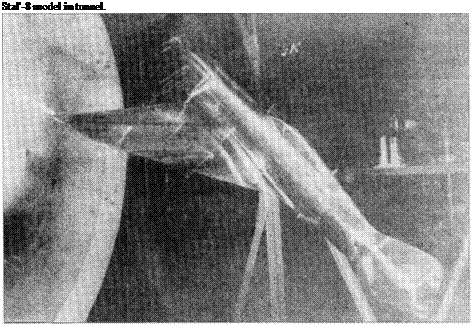
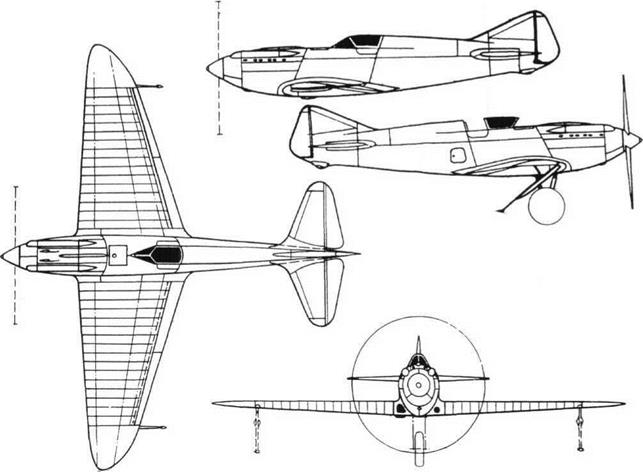
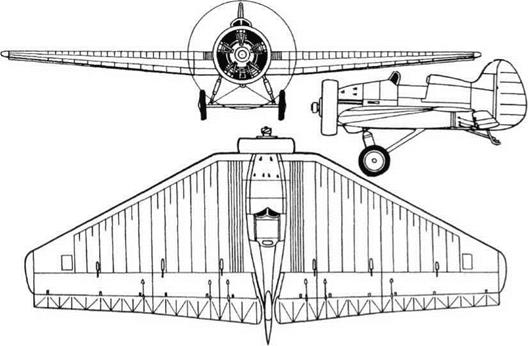
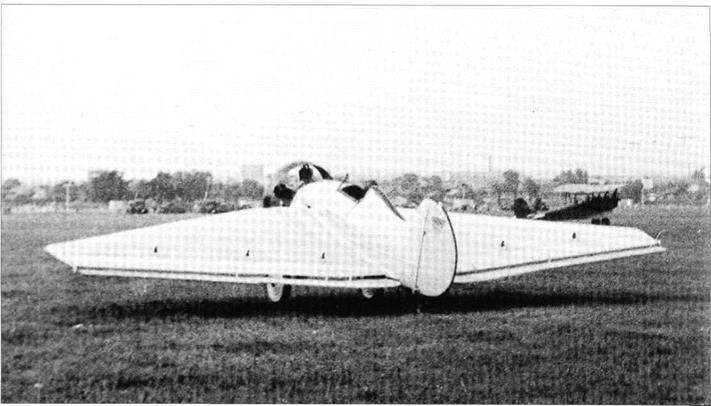
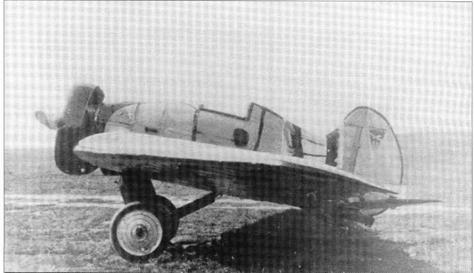
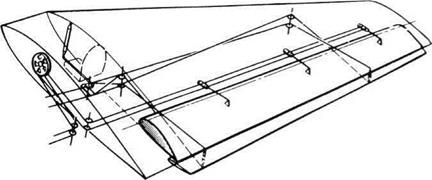 Bottom: BOK-5 servo control.
Bottom: BOK-5 servo control.
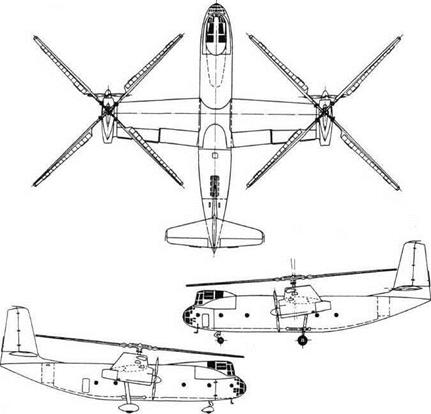

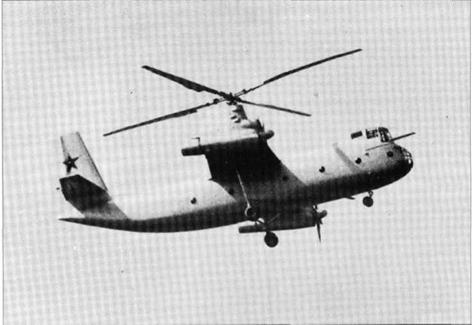 Apart from prolonged dissatisfaction with the engines, the problems with the Ka-22 were mechanical complexity, severe losses in the gearboxes and drives and the fact that each lifting rotor blew straight down on top of the wing. Similar charges could be levelled against today’s V-22 Osprey.
Apart from prolonged dissatisfaction with the engines, the problems with the Ka-22 were mechanical complexity, severe losses in the gearboxes and drives and the fact that each lifting rotor blew straight down on top of the wing. Similar charges could be levelled against today’s V-22 Osprey.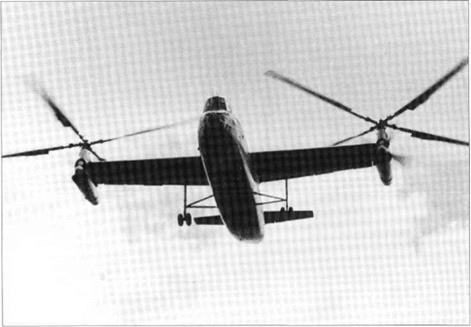
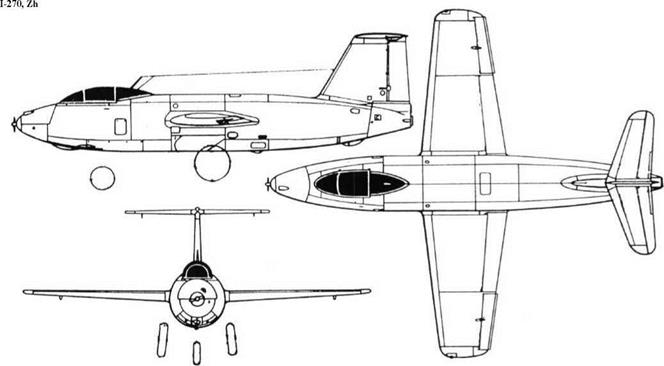
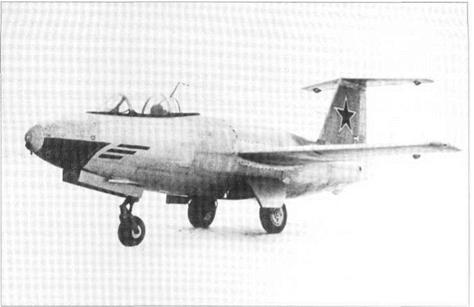
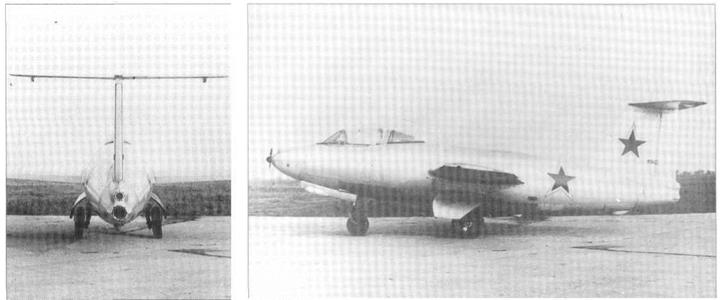



 Top right: SAM-6.
Top right: SAM-6. Purpose: To build a superior two-seat fighter.
Purpose: To build a superior two-seat fighter.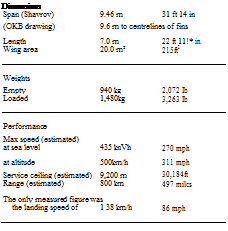
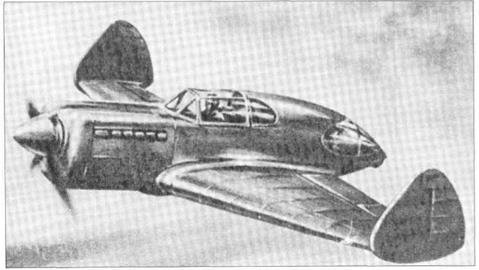
 Purpose: To test at modest speeds an aircraft with a ‘Gothic delta’ wing of very low aspect ratio.
Purpose: To test at modest speeds an aircraft with a ‘Gothic delta’ wing of very low aspect ratio.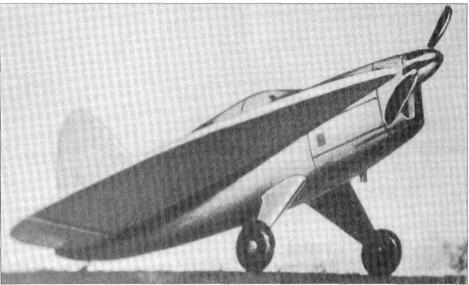
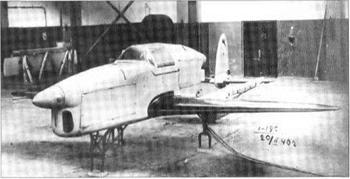



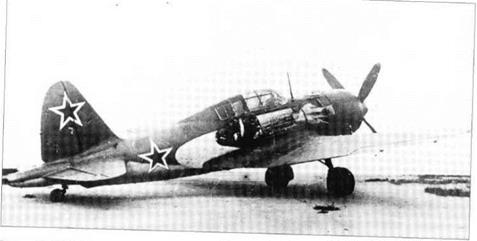
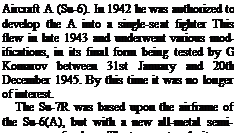
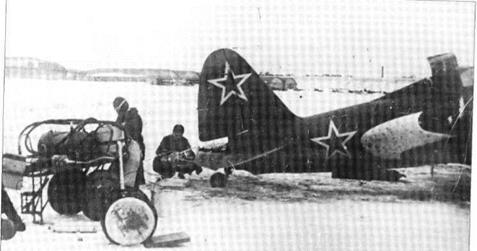

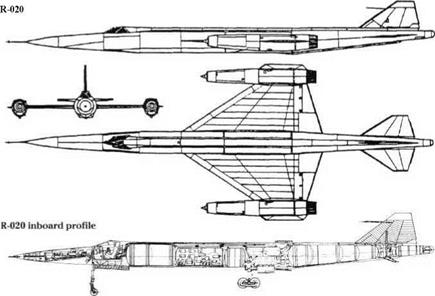



 a trim tab. One account says that the inverted – gull shape ‘improved stability and provided a cushion effect which reduced take-off and landing distance’, but its only real effect was to raise the wing on the centreline from the low to the mid position.
a trim tab. One account says that the inverted – gull shape ‘improved stability and provided a cushion effect which reduced take-off and landing distance’, but its only real effect was to raise the wing on the centreline from the low to the mid position.